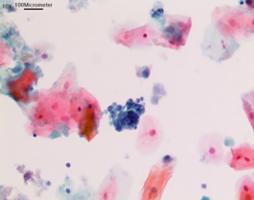LBC (Liquid Based Cytology)
Introduction of 
WisePrep Duet Processor
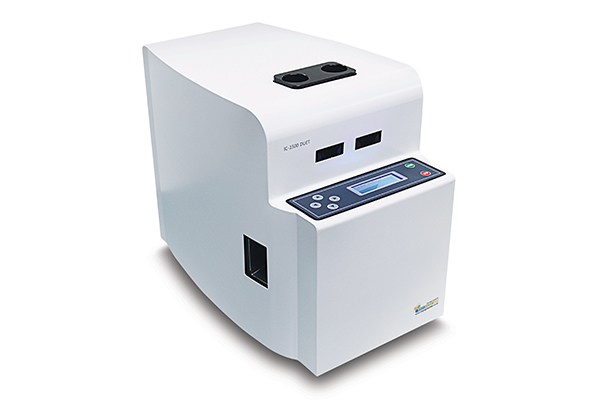
WisePrep Duet is a Cell Processor that performs Liquid-based Cytology. After Cell Preserve Vials are inserted, the device automatically smears cells. WisePrep Duet uses specially designed Cell Preserve Vials, Membrane Guide, and Membrane to perform simple smearing process. Running a smearing process with WisePrep Duet offers evenly spread out, single-layered smear, which helps decrease examination failure rates.
- Throughput up to 240 samples per hour
- Adjustable 2 steps vacuum suction provides optimal smear quality
- All parameters for Gyn., Body Fluid, Urine, FNA, Sputum, etc. can be saved separately
- Very Simple Preparation, Very Convenient & Clean Operation
- Automatic sample dispensing on to membrane
- Free from contamination
WisePrep Cell Preserve Solution
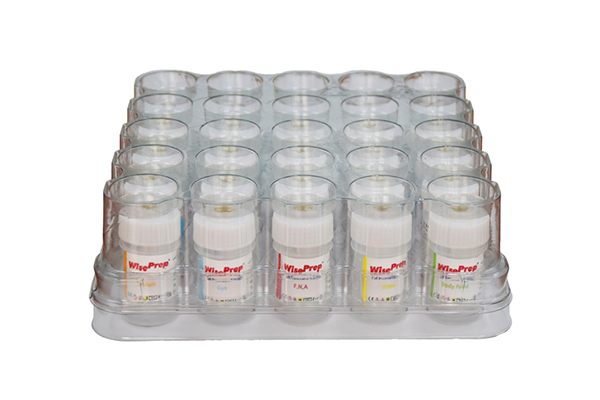
| Gyn | Body Fluid | Non-Gyn | ||
|---|---|---|---|---|
| F.N.A | Urine | Body Fluid | ||
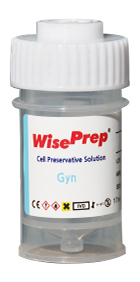 |
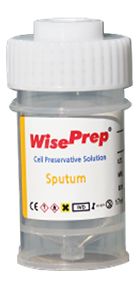 |
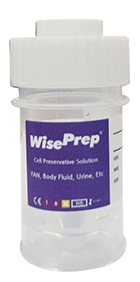 |
||
These are the WisePrepTM Cell Preserve Solution used for WisePrep Duet. There is a sealing at the top of each vial that prevents any liquid from spilling. The filter guide will punch through this sealing to allow suction from the device.
Features
- Patented unique consumables help the system yields high quality results
- Very easy sample preparation free from manual steps & decapping and etc.
- Double filter system helps cells and RBCs filtered in optimal condition free from debris
- Precipitation chamber helps maintain cell morphology from external stress.
- Optimized suction pressure system prevents from cell loss and morphology change
- Slide circles : 15 mm or 17 mm
- Optimized preserve solutions for Gyn. and various Non-Gyn. applications
- Patented preserve solutions make samples in good condition reducing mucous, blood debris and cell clusters
WisePrep Membrane Filter
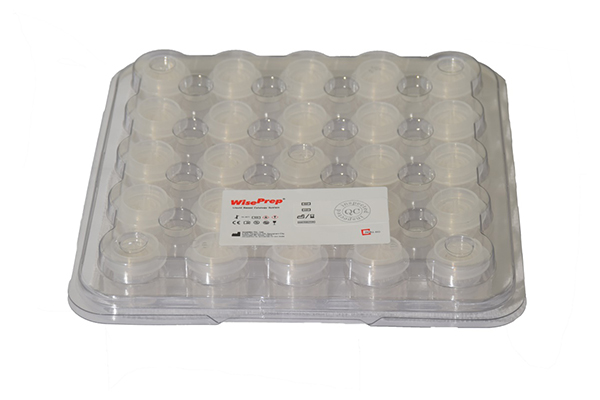
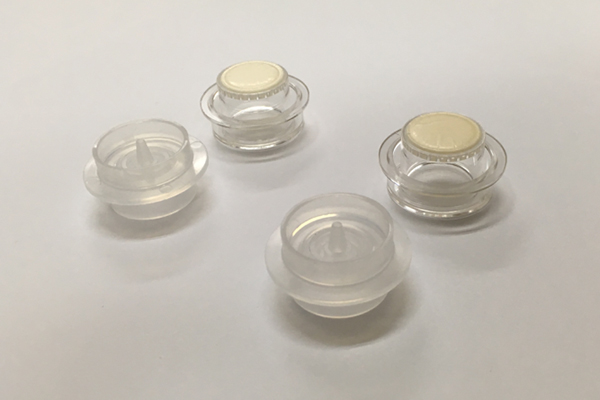
Filter Guides are used to connect the membrane with the vial as a middle piece. Also, it is responsible for punching in a hole through the sealings at the top of the WisePrepTM Cell Preserve Solution.
Cell Preserve Solution, Membrane Filter, and Filter Guide have following unique properties.
- Uniquely designed consumables help the whole system works faster and yields the best results.
- Very easy sample preparation
- In order to enhance background clearness, two precise filters are applied in vial and membrane filter.
- Two filter system work complementary which filtrate cells and RBCs from debris.
- Precipitation chamber helps maintain cell morphology from external stress.
- Ideal suction pressure according to the sample type to prevent cell loss and change in cell morphology.
- Clear cell transfers onto the slide within 15~17mm circle.
- Sample loading quantity and excessive sample is controller for the best quality
- Optimized preserve solutions for Gyn. and various Non-gyn. applications
- Preserve useful cell while transporting and reducing mucous, blood debris and cell clusters
Catalog
Download CatalogConcept
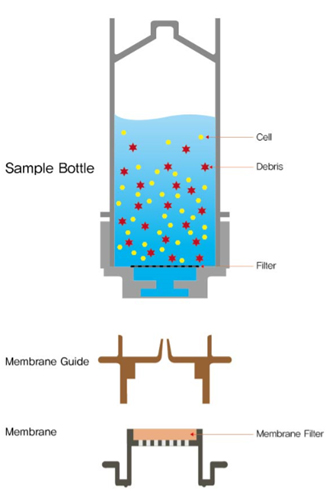
- Unique design guarantees high quality results
- Prevent cell loss and cell morphology change
- Slides 15~17 mm circle for easy and fast microscoping
- Double filtering system allows free from debris
- Allow thin and even layered slide
- Maintain cell morphology from external stress
Process
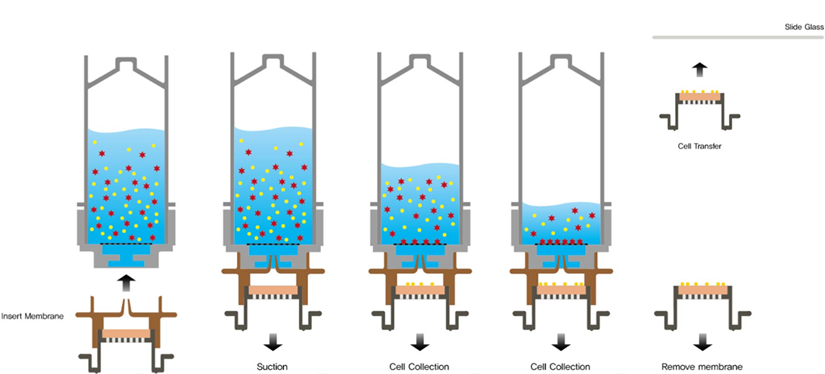
Accessories consist of three individual parts. Sample Vial is used to contain preserve solution along with the test samples. Membrane is used to hold samples and smear them on glass slides. Membrane Guide is used to guide samples from the Sample Vial to the Membrane.
In order to run the smearing process, couple the Membrane Guide with the Membrane and attach them to the Sample Vial. The smearing process using these components works as the process shown below.
1) Assembling Membrane, Filter Guide, and Vial
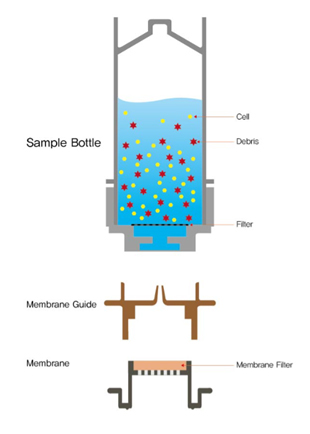
As shown below, couple the Membrane and the Membrane Guide and attach them to the vial. Make sure the vial is facing up and the coupled component is pushed down against the vial. Otherwise, there is a risk of sample leakage.
2) Suction
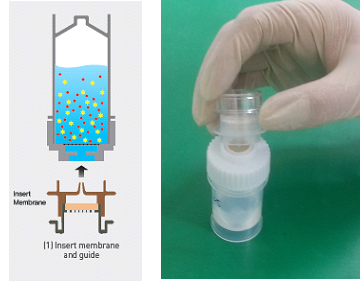
Insert the attached components to the device and run the process. The device will perform the 1st suction, which leads samples to be attached to the Membrane. If it is desired to have more samples on the Membrane, simply lengthen the 1st suction process or repeat the 1st suction
3) Cell Collection
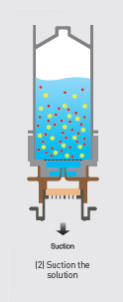
During the 1st suction process, any unwanted particles are filtered out by the 1st and 2nd filters and only the samples are placed on the Membrane.
4) Membrane Removal
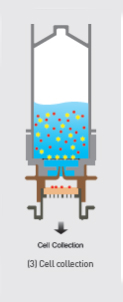
Detach the Membrane from the assembled components.
5) Cell Displacement and Smearing
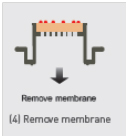
Smear the samples on the Membrane to the Glass Slides. For the Non-Gyn samples, be careful not to smear with too much force, which will lead to cell deformation.
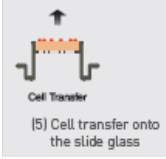
For each types of samples, 1st, 2nd, 3rd suction time, smearing pressure, and other process parameters can be configured for optimal results as shown below.
Slides Results
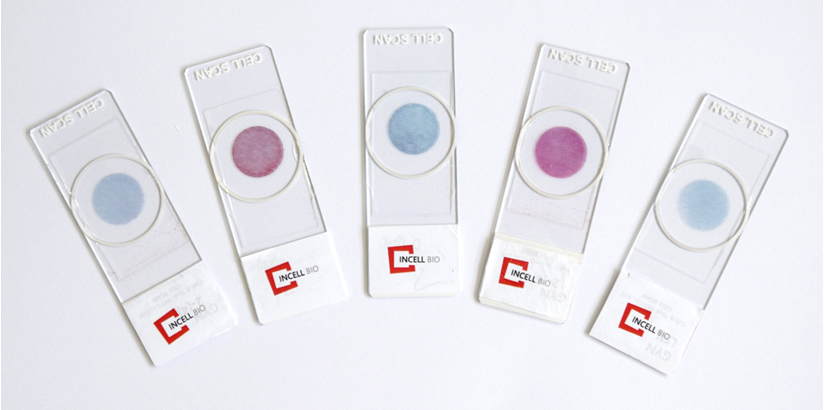
Atlas
Gynecology
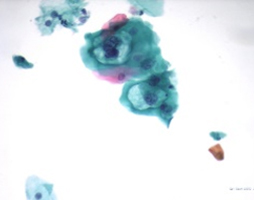
Body Fluid
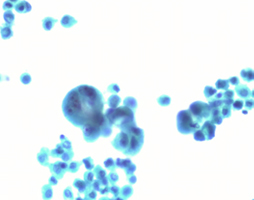
Breast
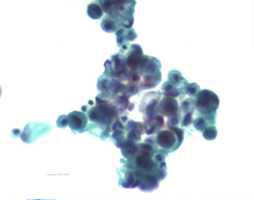
Thyroid
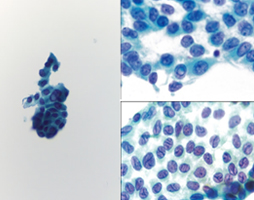
Urine
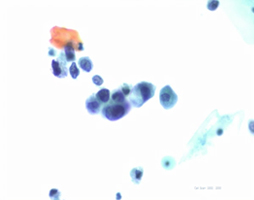
Sputum
